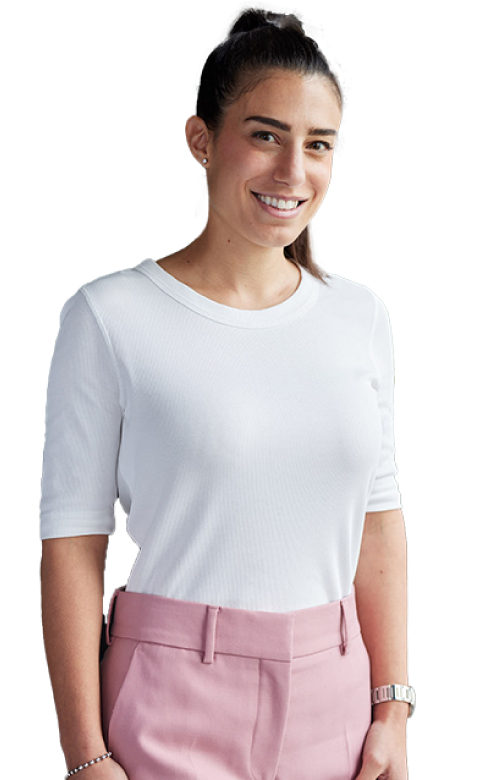
Rentvesting is a strategy some first home buyers are utilising to get into the property market. Property prices around Australia keep increasing, which is great if you own property, but not so great when you’re trying to get into the market. Some savvy first home buyers are utilising a different strategy to buy their first homes without having to sacrifice their lifestyles.
It’s called rentvesting.
Instead of buying and moving out to the suburbs, young home buyers are renting property in the area they want to live in and buying investment property in other, more affordable areas instead. This allows them to begin growing their property portfolio, generating equity and over time selling for capital gain.
This method allows them to live where they want, and begin generating funds and equity they can then use down the track when they’re ready to buy a home to live in.
Case study: Holly*, Brunswick
Holly recently purchased her first property in Reservoir for $555k. She’s not living in it though.
Holly lives and works in Brunswick where she lives in a share house with three other people and spends $500 per month on rent.
Holly enjoys the lifestyle in Brunswick, she doesn’t have to commute to get to work every day and loves the proximity to the city. However, with a median house price of $1.19M Holly isn’t in a financial position to buy in Brunswick just yet.
If she were to purchase a 2-bedroom house in Brunswick, Holly would be looking at home loan repayments of roughly $3,724 per month^ which would be well out of her budget.
Instead, she purchased her first property in Reservoir with a loan repayment of $1,886 per month#. She saved a deposit of $120k and received a financial gift from her parents of $40k to assist with loan serviceability.
Her tenants cover the loan repayments on the Reservoir property, giving Holly the freedom to save more money for another property, whilst her investment appreciates.
Holly chose to buy in Reservoir because purchase prices in that suburb are significantly lower than Brunswick, with a median of $790k. Subsequently Reservoir has a higher capital growth rate on 2 bedroom houses at 12.3% compared with Brunswick’s at 9%, and a rental yield of 2.4% which is comparable to Brunswick’s at 2.8%.
Who else might be investing before buying their own home?
We’re seeing young Aussies who are still living at home (often rent free) who are looking to grow their wealth. They are saving deposits and purchasing an investment property whilst still living at home to make the most of getting into the property market while they have no major fixed expenses or financial commitments.
This strategy means they’ll have more funds handy when it comes time to move out of home and purchase their first property to live in.
Case study: Finn and Elizabeth*, Roxburgh Park
Finn and Elizabeth live rent free at home with their parents in Roxburgh Park. Both aged 25, they want to live closer to the city, but can’t afford to purchase there just yet.
Instead, Finn and Elizabeth have purchased a property a couple of suburbs over in Gladstone Park for $650,000. Gladstone Park has a year on year capital growth rate of 10.2% on houses and rental yield of 3.2% with high rental demand – sitting above the national average for both measures.
Finn and Elizabeth were able to buy the property with minimal savings, as their parents provided a security guarantee (read about Guarantors here). With their tenants covering the mortgage repayments of $2,483@ and an appreciating property, Finn and Elizabeth are able to continue saving while living at home for the next few months. They are going to move into the property within the first 12 months of purchase to take advantage of the first home buyer stamp duty concession available in Victoria.
Should you try your hand at rentvesting?
Here’s some of the pros and cons as we see it:
Pros of rentvesting
• Generating wealth through property investment is a proven method, however it is a usually long-term strategy.
• You’ll be able to get into the property market sooner and start building wealth to purchase where you want to live.
• There are tax benefits and deductions you can access via investment properties that aren’t available in an owner-occupied home.
• You get to live where you want whilst also beginning to accumulate wealth via property.
Cons of rentvesting
• Interest rates aren’t great for investment loans at the moment (correct as at time of writing).
• If you do sell for a profit and haven’t lived in the property, then you will have to pay Capital Gains Tax.
• There are still expenses – such as repairs and upgrades – attached to being a landlord and holding an investment property, and you will also need to be able to cover repayments if your property is untenanted for any period.
• If you don’t live in the property within the first 12 months for at least 12 months you won’t qualify for any first home buyers benefits like First Home Buyers Grant or Stamp Duty Concessions.
Just remember, don’t buy cheap property for the sake of getting into the market.
We believe in buying well particularly if it’s an investment property (if you missed it, check out our article on buying property here). Basically, if you buy cheaply and don’t do your research the property is not going to appreciate or grow in value at the rate you want. This can leave you out of pocket and worse off than if you hadn’t purchased in the first place.
*names changed
^ based on an 80% LVR for a property worth $940,000 @ 4% P&I over 30 years.
# for $555,000 with a loan at $395,000 with repayments of $1,886 @ 4% P&I over 30 years.
@ based on 80% LVR for property worth $650,000 @ 4% P&I over 30 years.


